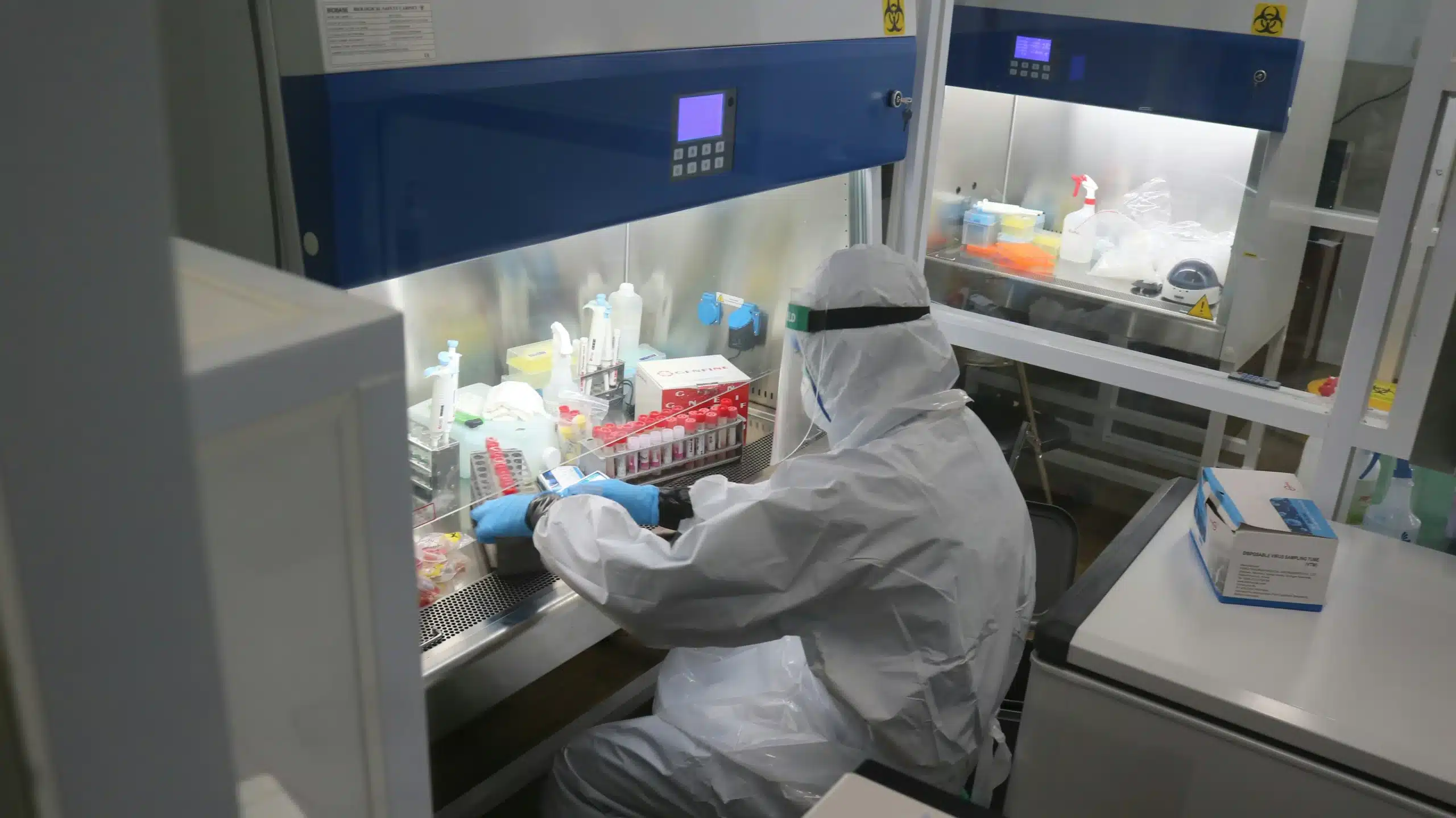What Happens After a Clinical Research Trial Ends? A Complete Participant Guide

Participating in a clinical research trial is a significant contribution to medical science—but what happens after the phase 1 trial ends? Whether you’re joining a study for access to new treatments or to support innovation, it’s essential to understand the next steps.
In this article, we’ll walk through everything that happens after a clinical research trial ends, from data handling to post-trial medical care and participant rights.
Key Takeaways
- Clinical trial participation often continues beyond the final visit with follow-up procedures and health monitoring.
- Data collected is analyzed securely and used to inform treatment outcomes and future studies.
- Participants may receive study results through summaries, newsletters, or published journal articles.
- Continued care, treatment access, and long-term follow-up may be offered depending on the study type.
Why Understanding Post-Trial Steps Is Important
Understanding what happens after a clinical trial is crucial—not just for researchers, but for participants and the broader public.
Here’s why understanding post-trial steps is essential:
1. Ensures Ongoing Safety Monitoring
After a clinical trial ends, researchers may continue monitoring participants for side effects or long-term outcomes. This is especially important for trials involving new medications, devices, or procedures where long-term safety data is still being gathered. Knowing that follow-up exists—and how to access it—can give participants peace of mind.
2. Clarifies Continued Access to Treatment
Some participants benefit significantly from the treatment they receive during a trial. Post-trial plans may offer continued access to that treatment, especially if it’s not yet publicly available.
Understanding these provisions ahead of time ensures that participants aren’t left in the dark once the trial concludes.
3. Provides Closure and Final Results
Participants often contribute their time and trust to help advance science. They deserve to know the outcomes of the study. Post-trial communication often includes information about the study’s findings, helping participants see the impact of their involvement and fostering transparency between researchers and the public.
4. Supports Informed Medical Decisions
Information gained during follow-up visits or post-trial assessments may influence a participant’s ongoing healthcare. If the trial identifies potential risks or ongoing benefits, this data can guide personal treatment plans in collaboration with a healthcare provider, especially in phase 3 trials.
5. Upholds Ethical Standards
Post-trial responsibilities are part of ethical research practices. Ensuring participants are informed, followed up with, and not abandoned after the study protects their rights and well-being, reinforcing public trust in the research process.
Immediate Steps After the Clinical Trial Ends
Once a clinical trial concludes, participants often wonder what happens next. While the research phase may be over, several important steps typically follow to ensure participant well-being and data integrity. Here’s what usually happens immediately after the trial ends:
1. Final Health Check and Exit Interview
Participants are usually scheduled for a final medical evaluation. This may include:
- Physical exams
- Blood tests
- Mental health check-ins
- A discussion about how the participant experienced the trial
This ensures any adverse effects are addressed and that participants leave the study in stable condition.
2. Return of Study Materials
If participants were provided with medical devices, medication, or diaries/logs, these are often collected or instructions are given for their disposal.
3. Discussion of Continued Access to Treatment
If the investigational treatment was beneficial, participants may be informed about:
- Continued access through an extension study
- Applying for compassionate use
- Availability after regulatory approval
This step is particularly important given that access to treatment post-trial is not always guaranteed. While specific statistics on post-trial access rates are limited, the ethical imperative for continued access is emphasized in international guidelines.
For instance, the Declaration of Helsinki mandates that sponsors and researchers arrange post-trial provisions for all participants who still need an intervention identified as beneficial in the trial. This underscores the necessity of planning for continued access to treatments that have shown benefit during the trial phase.
4. Data Confirmation and Follow-Up Planning
Researchers may confirm key details to ensure the quality of the data:
- Accuracy of records
- Clarification of survey answers or test results
- Plans for long-term follow-up if applicable
5. Information on Study Results and Next Steps
While full results may take months or years to publish, participants are often told:
- When they might receive a summary of findings
- How the data from the phase 3 trial will be used
- Contact details for follow-up questions
What Happens to the Data Collected During the Trial?
Once a clinical trial concludes, the data collected from participants plays a vital role in shaping medical understanding, regulatory decisions, and future treatments. But what exactly happens to all that information once the study is over?
1. Data Is Analyzed for Safety and Effectiveness
Researchers and statisticians examine the results to determine if the treatment was effective, whether side effects occurred, and how different participant groups responded. This stage helps identify patterns and informs how future paid research studies can be structured for better accuracy and participant safety.
2. Results Are Submitted to Regulatory Authorities
If the trial is testing a new drug, device, or treatment protocol, the collected data is compiled into comprehensive reports and submitted to regulatory bodies like the U.S. Food and Drug Administration (FDA) or the European Medicines Agency (EMA). These agencies review the evidence to decide whether the product can be approved for public use or if further trials are required.
3. Personal Information Is Kept Confidential
Participants’ personal data is rigorously protected through anonymization techniques—names and identifying details are removed or replaced with codes to ensure confidentiality. This is done in accordance with privacy regulations such as the Health Insurance Portability and Accountability Act (HIPAA) in the U.S. or the General Data Protection Regulation (GDPR) in Europe.
4. Data May Be Shared for Further Research
To advance scientific knowledge, de-identified trial data may be shared with other research institutions, universities, or public databases. This helps validate findings, allows for meta-analyses, and fosters collaboration that can accelerate innovation in medical treatment and understanding.
5. Results Are Published and Reported
Findings are often:
- Published in peer-reviewed journals
- Presented at medical conferences
- Made publicly available through registries
How Are Trial Results Shared With Participants?
Effective communication of clinical trial results to participants is a cornerstone of ethical research practices. A study conducted by Johns Hopkins University in July 2022 found that 80% of research participants rated their experience in the study as 8 out of 10 or higher, underscoring the value participants place on being informed and engaged throughout the research process.
Once a clinical trial concludes, participants often want to know what their involvement contributed to—and rightfully so. Sharing results with participants is an essential part of ethical research, ensuring transparency, respect, and a sense of closure.
1. Lay Summaries Are Often Provided
Researchers may prepare easy-to-understand summaries of the study results, known as lay summaries or plain-language summaries. These documents:
- Avoid technical jargon
- Explain whether the treatment was effective
- Outline any major findings or conclusions
These are typically emailed or mailed to participants, or made available on a secure portal dedicated to study participation.
2. Results May Be Shared During Follow-Up Visits
If participants attend follow-up appointments, study staff may discuss the trial findings in person. This allows participants to ask questions and understand how the results relate to their own care.
3. Public Registries Are Updated
Many trials are legally required to post results on public registries like ClinicalTrials.gov. While these listings are more technical, they’re available for anyone to access.
4. Scientific Publications and Conferences
While not always participant-focused, results may also be:
- Published in peer-reviewed medical journals
- Presented at professional conferences
Researchers often aim to notify participants once the findings are publicly released, especially if the results have clinical significance.
5. Participant Newsletters or Study Websites
Some research teams maintain ongoing communication through newsletters or dedicated trial websites. These may include updates, milestones, and final outcomes, helping participants feel included throughout the entire research process. Participants who understand the structure and phases of participation are better prepared to interpret the outcomes they receive after the study ends.
Will You Receive Continued Medical Care After the Study?
One of the most common questions among clinical trial participants is whether they will continue receiving medical care once the study ends. The answer depends on several factors, including the type of study, its results, and the policies of the sponsoring organization overseeing the clinical studies.
1. Care During the Trial vs. After
During the trial, participants typically receive all necessary medical care related to the investigational treatment and its monitoring. However, once the study concludes, this care may not automatically continue unless previously agreed upon at the study site.
2. Post-Trial Access to Treatment
If the study drug or device proved beneficial, participants might qualify for:
- Extension studies that allow continued access
- Compassionate use programs
- Post-trial supply as outlined in the consent form or sponsor agreements
According to the World Medical Association’s Declaration of Helsinki, researchers should make provisions for post-trial access to interventions identified as beneficial. However, a 2018 review found that only 20% of clinical trials included a post-trial access plan in their published protocols. This highlights the importance of asking about continued care before enrolling in a study.
3. Routine Medical Care Responsibility
After the trial ends, routine health care—unrelated to the research—is typically transitioned back to the participant’s primary healthcare provider. Researchers may assist with medical handovers or provide documentation to support continued treatment.
4. Follow-Up for Safety Monitoring
In some cases, participants are invited to attend follow-up visits even after the trial ends. These visits:
- Monitor for long-term side effects
- Help gather extended outcome data
- Do not always include ongoing treatment but support overall well-being
5. Check Your Consent Form
The informed consent form typically outlines what support or treatment, if any, is provided after the trial concludes. It’s a key part of understanding your rights and responsibilities as a participant. Your informed consent form should clearly outline:
- What care is covered during the study
- Whether post-trial access is available
- Who is responsible for costs after participation ends
Conclusion
The end of a clinical research trial isn’t the end of your journey. From final health checks and data analysis to potential continued treatment and follow-up, every step after the trial matters. Staying informed helps you advocate for your health and understand the broader impact of your participation. If you ever have questions, don’t hesitate to reach out to the study team—you’re still a valued part of the research process.
Want to take part in more studies that shape the future of medicine? Sign up with Focus Group Panel to discover paid research opportunities and contribute to breakthroughs that matter.
FAQs
Will I find out if the treatment worked?
Yes, most clinical studies provide participants with a summary of the trial results after the data has been fully analyzed and peer-reviewed. This may be shared as a plain-language summary, posted on public registries like ClinicalTrials.gov, or communicated directly through follow-up channels. While the timing may vary, researchers aim to keep participants informed about the impact of their contribution.
Do I keep getting the experimental drug or device?
Not always. Continued access to an investigational treatment depends on the study’s protocol, whether the product received regulatory approval, and the sponsor’s post-trial access policies. Some studies include extension phases or compassionate use options, but this isn’t guaranteed. It’s important to ask your study coordinator in advance about what to expect after the study ends.
What if I experience side effects after the trial?
If you notice any health changes after the study concludes, report them to both the research team and your regular healthcare provider. Even after the trial ends, researchers may want to monitor for late-onset side effects. In some cases, follow-up visits or check-ins are part of post-trial care, especially for studies involving new drugs or devices.
Can I participate in another study right away?
Possibly, but not always immediately. Many clinical trials have waiting periods or exclusion windows to ensure your safety and prevent overlapping effects from previous studies. Before enrolling in a new trial, you’ll go through an eligibility screening, which may include health evaluations or time gaps based on your last participation.
Who can I contact if I have concerns post-trial?
You should contact the study coordinator or principal investigator listed in your original consent form. These professionals remain responsible for addressing participant concerns even after the trial concludes. Keep your consent documents handy, as they include direct contact information and any instructions for follow-up care.
What happens when a clinical trial is completed?
When a clinical trial is completed, the research team will analyze the study results to determine if the new treatment or new drug is effective and safe for the trial participants. This analysis includes reviewing all data collected during the study, which can take several months. Once the data is analyzed, the sponsor of the trial will compile the findings into a report.





